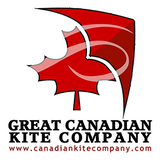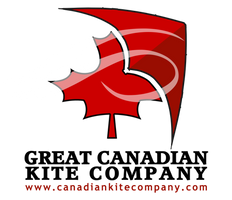 There are a variety of terms that are used in the sport of Kite flying. Here is a short
There are a variety of terms that are used in the sport of Kite flying. Here is a short
list to give you some common lingo and their meaning!
Bridle: the lines which connect to the kite sail and frame to help support the kite and/or to orient the kite at a proper angle to the wind.
Carbon / Graphite: Stunt kite frames are made of carbon fiber which is relatively are rigid material and light weight. Can be in a rod or tube form. Popular graphite products include: Sky Shark, Icone and Revolution. Wrapped or extruded.
Centre T: Where the spar for the spine and lower spreaders are joined.
Dark Side (The): An affectionate term for those Kite enthusiast who have embraced flying the quad-line stunt kite by Revolution Kites.
Dual Line: Refers to two line trick or stunt kites. The two lines allow for the control of the kite. (There are Quad line stunt kites as well)
Dyneema kite line: A brand of synthetic fiber used in making performance kite line. It's best advantage is it's very strong and yet very thing and doesn’t stretch much. Not all spectra lines are created equal! Spectra fibre is used to make popular premium flying line. These brands may incorporate unique braiding of the fibre, coating with agents to reduce friction and sometime to make them resistant to UV and salt water. All of which enhance performance and line life significantly.
Fiberglass: This is a kite material which combines strength and flexibility with relative light weight. It comes in several forms from solid fiberglass rods and hollow tubes.
Frame: The skeleton of the kite.
Freestyle: "Freestyle" kite is typically a good performer, capable of a wide range of tricks while still very stable and predictable. Freestyle is performing a variety tricks of one after another in succession.
Foil Kite: Foil kites look like a parachute and use the wind itself to give structure to the kite. These kites can be two, three and four line kites in a wide variety of sizes. These kites can genrate a great deal of power. Obvoiusly the larger the kite the more power / pull with the same wind speed. You will see smaller recreation ones to the very large which pull the pilot in a buggy, a snowboard or kite surf board.
Ground Stake: A handy tool which allows you to stake your kite handles or flying straps to the ground while you walk to reset or adjust your kite for launch. This tool helps to ensure your kite doesn’t blow away.
Icarex: A brand name of a type of ripstop fabric made from polyester fibers. It is lighter and more fade resistant than nylon ripstop fabric.
Leading edge: The name for the part of the kite which runs from the nose to the wing tip.
Line Set: The lines which are used to control the kite. They come in a variety of test weight and lengths. Stronger weight lines being used for stronger winds and bigger kites. Line sets are made of a variety of fibres.
Quad line: Kites with four lines for control. Not only can you maneuver left and right, but you can fly sideways, spin like an airplane propeller, and forward or backward in the wind window.
Ready to Fly / RTF: Many kites are sold with everything you need to get started. Ready to fly means all you have to do is assemble the kite, attach the included line and add wind! Many high end kites are sold as Kite only.
Rip-stop: Typically used to make kite sails. It can be made of nylon or polyester. Hence ripstop nylon or ripstop polyester. Rip-stop is the process that weaves smaller fibers with larger fibers creating squares of reinforcing fibers in the cloth which make it resistant to tearing. The idea being that a tear will stop at one of the reinforcing fibers.
Sail: The cloth material of the kite. The material is usually made from rip-stop nylon, polyester.
SkyShark: Is a brand of high quality performance carbon fibre tubing used to frame performance kites. Made in the USA.
Sleeving: A cover which encloses the ends of flying lines and helps to preserve strength and prevent wear. Typically where the line sets are tied.
Soul Flying: This is term referring to a style of stunt kite flying where you express yourself freely with your kite - Whether to music or to silence, precision or full on tricks you are in effect flying your Heart via your kite!
Spar: A generic term referring to the framing material used as the frame of a kite.
Spectra®: A brand of synthetic fiber used in making performance kite line. It's best advantage is it's very strong and yet very thing and doesn’t stretch much. Not all spectra lines are created equal! Spectra fibre is used to make popular premium flying line. These brands may incorporate unique braiding of the fibre, coating with agents to reduce friction and sometime to make them resistant to UV and salt water. All of which enhance performance and line life significantly.
Spine: The center rod that runs lengthwise down a kite.
Spreader: The spars which run horizontally across the span of the kite holding the wings open.
Stand-offs: Are typically carbon or fibreglass rod which holds the trailing edge of the sail back from the lower spreader. You may be able to fine-tune the performance of your kite in different wind conditions as their position affects the amount of lift the kite generates and thereby it's speed, turning, and precision.
Tail: Attached to the kite for visual effect or to cause drag on a single line kite. Made of Ripstop or plastic. Also a term to describe the lower end of the spine.
Tow point: The part of the bridle where the flying lines are attached using a Larkshead knot.
Winders: For ease of use, lines are stored on winders. With line(s) together, wrap the lines around the winder fairly snuggly. Some flyer prefer wrapping the lines in a figure eight motion, others prefer a simple wrap. With care, either will work just as well.
Wind range: The range of wind speed that a kite will fly well in. Can be given in Kph, mph, or beaufort .
Wind window: A 180 degrees in which the kite flies. It’s size is determined by the length of the flying lines. At the edges of the window the kite will slow and has a tendency to stall and makes for a great place to land.
Diagram of a Stunt Kite


Comments